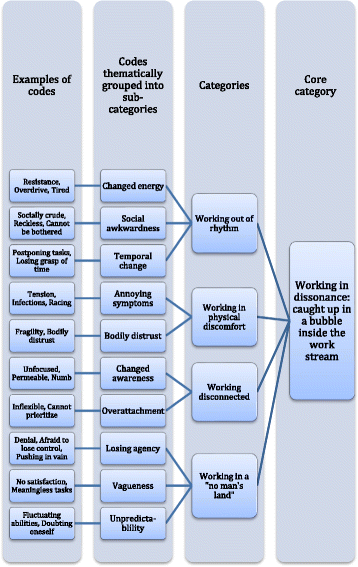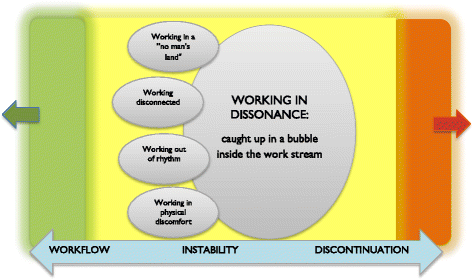Working in dissonance: experiences of work instability in workers with common mental disorders
- PMID: 28521731
- PMCID: PMC5437399
- DOI: 10.1186/s12889-017-4388-3
Working in dissonance: experiences of work instability in workers with common mental disorders
Abstract
Background: Common mental disorders have a negative impact on work functioning, but less is known about the process when the functioning starts to destabilize. This study explores experiences of work instability in workers with common mental disorders.
Methods: A grounded theory study using a theoretical sampling frame, individual in-depth interviews and a constant comparative analysis conducted by a multidisciplinary research team. The sample involved 27 workers with common mental disorders, currently working full or part time, or being on sick leave not more than 6 months. They were women and men of different ages, representing different occupations and illness severity.
Results: A general process of work instability was conceptualized by the core category Working in dissonance: captured in a bubble inside the work stream. The workers described that their ordinary fluency at work was disturbed. They distanced themselves from other people at and outside work, which helped them to regain their flow but simultaneously made them feel isolated. Four categories described sub-processes of the dissonance: Working out of rhythm, Working in discomfort, Working disconnected and Working in a no man's land.
Conclusions: The experience of work instability in CMDs was conceptualized as "working in dissonance", suggesting a multifaceted dissonance at work, characterized by a sense of being caught up, as if in a bubble. Focusing on how the worker can re-enter their flow at work when experiencing dissonance is a new approach to explore in occupational and clinical settings.
Keywords: Anxiety; Depression; Grounded theory; Qualitative research; Work ability.
Figures



References
-
- Siu AM, Hung A, Lam AY, Cheng A. Work limitations, workplace concerns, and job satisfaction of persons with chronic disease. Work. 2013;45(1):107–115. - PubMed
MeSH terms
LinkOut - more resources
Full Text Sources
Other Literature Sources
Medical

